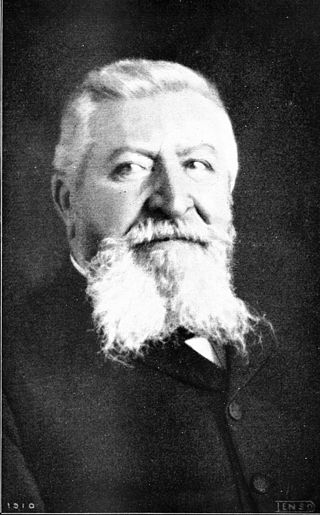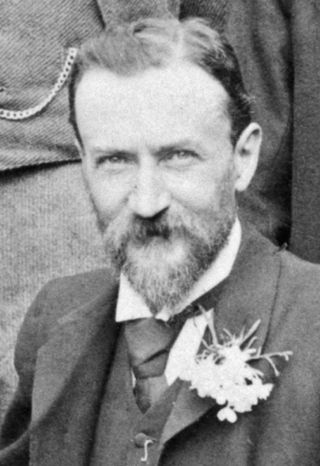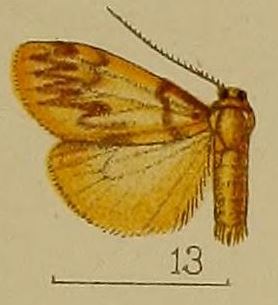
Charles Oberthür was a French amateur entomologist specializing in lepidoptera.

Arthur Gardiner Butler F.L.S., F.Z.S. was an English entomologist, arachnologist and ornithologist. He worked at the British Museum on the taxonomy of birds, insects, and spiders.

Albert Stewart Meek was an English bird collector and naturalist.
Cyme is a genus of moths in the family Erebidae. The genus was described by Felder in 1861.
Hypagoptera is a genus of moths in the subfamily Arctiinae. It contains the single species Hypagoptera rufeola, which is found in South Africa.

Neasura is a genus of moths in the subfamily Arctiinae. The genus was first described by George Hampson in 1900.
Henley Grose-Smith (1833–1911) was an English entomologist who specialised in Lepidoptera.

Lepidoptera Indica was a 10 volume work on the butterflies of the Indian region that was begun in 1890 and completed in 1913. It was published by Lovell Reeve and Co. of London. It has been considered the magnum opus of its author, Frederic Moore, assistant curator at the museum of the East India Company. Frederic Moore described a number of new species through this publication. Moore was a splitter, known for careless creation of synonyms, sometimes placing the same species in more than one genus.

Spilosoma wilemani is a species of moth of the family Erebidae. It was described by Walter Rothschild in 1914. It is found in Taiwan and Japan's southern Ryukyu Islands.
George Greensill Barnard was a British entomologist and ornithologist.
Chloroclystis rufofasciata is a moth in the family Geometridae. It is found in New Guinea.

Asura percurrens is a moth of the family Erebidae. It is found in New Guinea.
Cyme basitesselata is a moth of the subfamily Arctiinae.

Dipaenae ferruginosa is a moth of the subfamily Arctiinae first described by Francis Walker in 1854. It is found in the Amazon region.
Exilisia bipuncta is a moth of the subfamily Arctiinae. It was described by George Hampson in 1900. It is found on Madagascar.
Epimolis flavonotata is a moth of the family Erebidae. It was described by Walter Rothschild in 1909. It is found in French Guiana, the Amazon region and Venezuela.

Neasura hypophaeola is a moth of the subfamily Arctiinae. It was described by George Hampson in 1900. It is found on the Sangihe Islands.
Neoduma plagosus is a moth of the subfamily Arctiinae. It was described by Rothschild in 1912. It is found in New Guinea.

Pheia discophora is a moth in the subfamily Arctiinae. It was described by Paul Dognin in 1909. It is found in Colombia.

Pseudosphenoptera nephelophora is a moth in the subfamily Arctiinae. It is found in Brazil.










